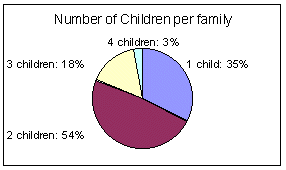Education and the Second GenerationIn Chapter 3, the various aspects relating to educational achievement of Maltese-background youth in Australia were commented upon. The general impression for a long time has been that Maltese youth are not participating fully in the education process. Various studies in the 1970s. and 80s. attest to this fact. However, more recently, once gets the feeling that there has been an improvement in this situation. The problem has been the lack of specific studies to show actual statistical information relating to this topic. The census data (the latest being those of 1996) do not necessarily reflect these changes because of the lumping of all second generation together - as we saw above, there is an enormous range of age-groups that can be lumped together under this rubric. The survey carried out (Cauchi 1999) shows that there is a substantial improvement in educational achievement by Maltese-background youth of the second generation is seen below. It can be seen that males tend to form the larger proportion in each group compared to females. Overall the proportion of Maltese-background youth who have an education equal to Year 11 or better is 67%, or two-thirds of the population. Nearly one-third finish secondary schooling (Year 12) and 18% follow a tertiary course. An important point that comes out from this survey is the considerable variation between the younger and the older persons within the second generation. For those under the age of 30 the proportion of 2nd- generation persons having a tertiary education was 30.2% compared to those aged 30 or over, where the proportion was only 9.8%. This illustrates the changes that are taking place within the second generation, and emphasizes the unreliablity of census statistics which lump the second generation into one category. 
Fig 6.3 - Education level reached by Maltese second-generation. (Source - Cauchi 1999) Further encouraging confirmation of these trends can be seen from the comments relating to participation of students in Victoria University of Technology (see Borland -1999) as well as the considerable increase in the number of Maltese-background students applying for university positions in 1997 (see Zammit, 1999). Source: Maurice N.Cauchi - The Maltese Migrant Experience, Malta 1999
    
| 

![]() .
.